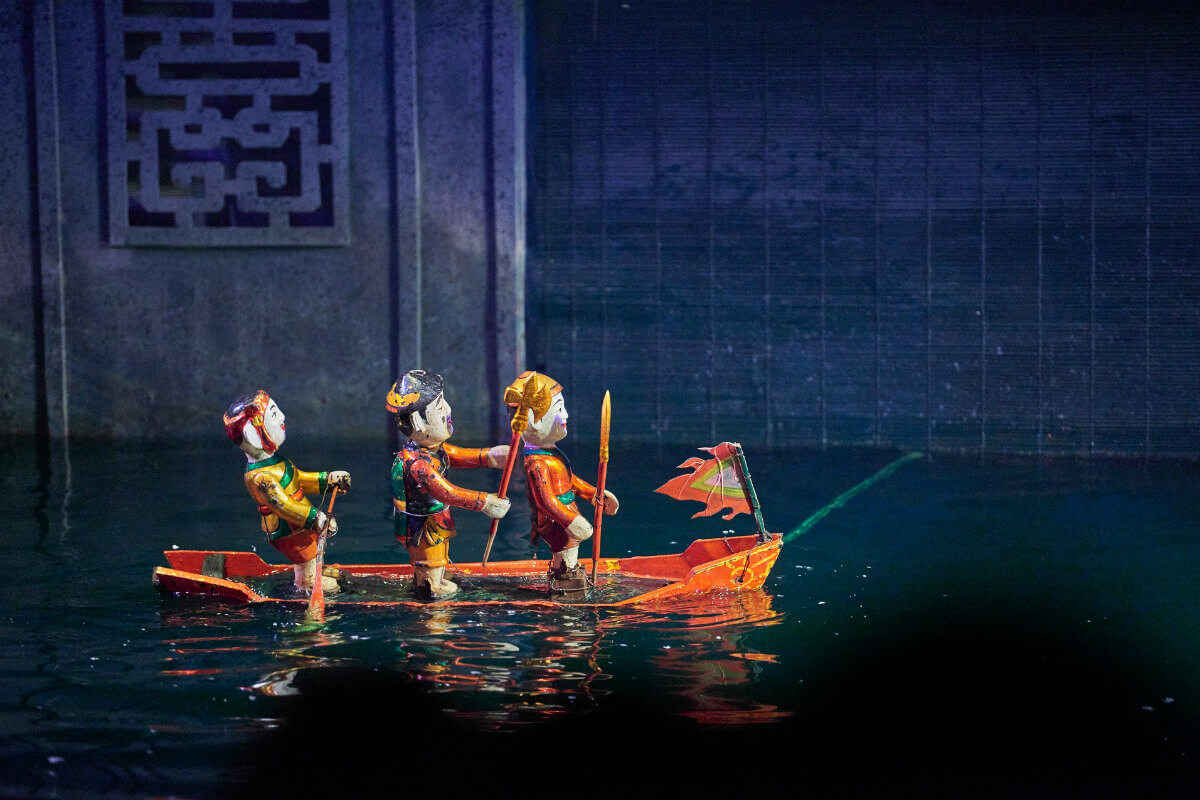

In fact, most of foreign audiences are surprised and show their admiration for Vietnam's water puppetry. Notably, the Thang Long Water Puppet Theater was honored with the title of “the only theater in Asia performing 365 days a year.” Loan gave the fact that the Vietnam National Puppetry Theater, Thang Long Water Puppet Theater have performed water puppetry in nearly 100 countries. In depth of vitality and cultural identity of Vietnam, water puppetry has been attractive to the public, especially foreign tourists. Over the past two decades, water puppetry has developed strongly with more diverse, interesting, lively acts and topics combined with effects of the modern stage. It also depicts festivals as dragon dance, lion dance, palanquin procession, wrestling, martial arts, buffalo, cock fighting, boat racing, swimming, swinging and praises national heroes in the struggle against foreign invaders such as Trung Sisters, Le Loi, Tran Hung Dao. It features daily life of farmers, such as planting, ploughing, tending and catching ducks, fishing, pounding rice. The art of water puppetry is the crystallization of creativity, intelligence and skills of Vietnamese farmers for generations. These are old and famous puppet villages lying around Thang Long Citadel and the Red River delta. This kind of art has been refined and perfected to become a unique traditional art of stage of the nation.ĭao Thuc, Te Tieu, Trang Son, Binh Phu, Thach Xa, Nguyen Xa, Nam Chan, Thanh Hai, Ra are typical puppet villages in Vietnam. However, based on collected evidence, water puppetry was popular in Vietnam under the Ly Dynasty. Legend has it that water puppetry was born when An Duong Vuong built Co Loa Citadel in 255 B.C. Attentively, through water puppetry, viewers could learn more about literary stories, customs, excerpts of cheo (popular opera) and tuong (classical drama), folk songs, and proverbs.

Loan, water puppetry is an art of combination of stories, songs, dances, music, acting, antics, dialogues, orchestra, sounds including that of firecracker, lighting, and more, creating strong and attractive effects to viewers. Water puppet performance in Rach village of Hong Quang commune, Nam Truc district, Nam Dinh provinceĪccording to Prof. Thanks to the skillful and talented control of artisans, the puppets - inanimate objects come to life like soulful beings. The water surface is both an environment and a supporting factor for puppets to show off their magical, vivid, surprising and mysterious performances to audiences. Water is not only a place where puppets perform, but also an element of alliance, symbiosis, and resonance. Tu Thi Loan revealed that water puppetry uses the water surface as a stage. In an article written for the People’s Army Newspaper’s Tet (lunar New Year) edition, Prof., Dr.


 0 kommentar(er)
0 kommentar(er)
